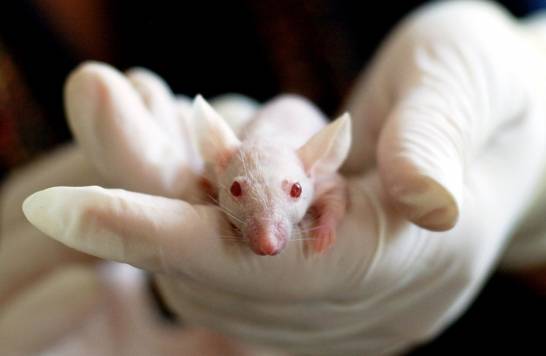An international research team led by Dr. Ana Guadaño at the Alberto Sols Biomedical Research Institute (IIBM, mixed center CSIC-UAM) in which the Complutense University of Madrid (UCM) participates introduced in mice – through CRISPR gene editing techniques–, a mutation of the MCT8 protein, responsible for transporting thyroid hormones into the cell.
Patients with mutations in this protein have the Allan-Herndon-Dudley syndromerare disease that manifests itself with severe neurological alterations and in which each patient can present non-MCT8 mutation.
In this work, published in Neurobiology of Disease, the first avatar model of the disease is described, that is, the first animal with the same genetic alteration of several patients.
It is the basis for studying the possible ‘genetic repair’ of this mutation in an animal model and assessing whether it is possible to prevent or reverse the serious neurological alterations that exist in these patients.
“The development of avatar models that faithfully reproduce the changes of patients with the same mutation is the first step towards targeted therapy. Specifically, it is the basis to be able to study the possible ‘genetic repair’ of this mutation in an animal model and to assess whether it is possible to avoid or reverse the serious neurological alterations existing in these patients”, justifies the importance of the study. Carmen Grijotaresearcher at the Department of Cell Biology at UCM and IIBM.
Same neurological and motor changes in avatars and humans
For this study, mice with the “P321L” mutation. Tests were carried out to study the behavior, anxiety levels and motor coordination capacity of mice. Then, the brains of these animals were extracted and specific stains were performed to visualize and study different neuronal types.
“Finally, a complete computer analysis understand how the mutation may be affecting the structure of the MCT8 transporter and therefore its thyroid hormone transport function,” he adds. Victor ValcarcelIIBM researcher and co-author of this work.
An in-depth computational analysis was performed to understand how the mutation may be affecting the structure of the MCT8 transporter and therefore its thyroid hormone transport function.
Among the alterations presented by the mice, were found brain hypothyroidism (lack of thyroid hormones in the brain), hyperthyroidism (excess of thyroid hormones in other tissues), changes in the distribution of neurons in the cerebral cortex, and a decrease in GABAergic neurons. In addition, impaired motor coordination and anxious behavior were observed in the mutant mice. All these findings reflect the characteristic changes of patients with this disease.
In the next steps of this line of research, the scientists advance, it would be drug administration which mimic the activity of thyroid hormones but do not need MCT8 to pass into cells because they use different transporters. “The idea is to see if these drugs are able to reach the brain of mutant mice and improve all these changes,” he says. Marina GuillenIBM researcher.
The idea is to verify if these drugs are able to reach the brain of mutant mice and improve all these changes.
In addition to these two institutions, the Institute of Functional Genomics of Lyon (France) and the University of Bristol (United Kingdom) participate in the work.
Reference:
Víctor Valcárcel-Hernández et al. “A CRISPR/Cas9-engineered avatar mouse model of monocarboxylate transporter 8 deficiency exhibits distinct neurological changes.” Neurobiology of Disease
